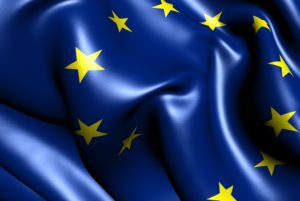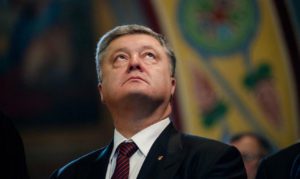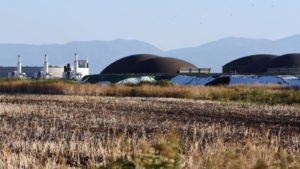
The Polish fashion retailer LPP Group, managing the brands Reserved, Cropp, House, Mohito, Sinsay, in July-September 2019 increased sales in Ukraine by 39.2% compared to the same period in 2018, to PLN 127.6 million (about $33 million). According to the company’s financial report, LPP’s total revenue from sales in the third quarter grew by 14.9%, exceeding PLN 2.3 billion (about $605.6 million). At the same time, one of the highest sales growth dynamics was recorded in Ukraine.
In general, over the nine months, LPP increased sales in Ukraine by 33.1%, to PLN 321.8 million (about $83 million), while sales of the entire group grew by 12.6%, to PLN 6.389 billion ($1.65 billion).
In addition, it is reported that in September the retailer opened an online store of its own brands in Ukraine, which became the 13th e-commerce market for LPP Group.
“Adapting to the prevailing trend associated with the increasing popularity of online shopping, we are taking steps to further develop this sales channel. We implement this development through our own online stores. This gives us direct access to clients, control over goods and the absence of intermediaries. In the second half of 2019, the group launched an online store for all EU countries and for Ukraine,” the report said.
LPP S.A. was established in 1995. The first store (Reserved) was opened in 2000.

Ambassador of the European Union (EU) to Ukraine Matti Maasikas has said that the European Union will continue supporting Ukraine on the way of reforms and European integration. Tomorrow Ukraine marks the 6th anniversary of the beginning of the Revolution of Dignity, which radically changed and reoriented the modern history of the country, he said at a meeting of the Ukrainian government on Wednesday. He said that the Ukrainian people have already paid and continue to pay a high price for the European choice. The country took up this challenge while it is defending its territorial integrity and sovereignty, he said.
For the sake of the values and principles that we share, you can count on the indestructible support of the European Union, Maasikas said.
Speaking about the Ukraine-EU Association Agreement, Maasikas said that it is the contractual basis of Ukraine-EU bilateral relations.
He said that among the vital reforms are the fight against corruption, progress in the field of digital technologies, energy, and environmental protection.
“The demand for reforms in these areas will sound louder from your citizens than our requests to fulfill the obligations of the agreement,” the ambassador said.
He also said that since 2014, the EU has mobilized EUR 15 billion in grants and loans to support reforms in Ukraine.
The EU welcomes the government’s intentions to deepen cooperation in the energy and digital space, Maasikas said.

The Ukrainian State Bureau of Investigation (SBI) has interviewed 562 witnesses as part of pretrial investigation into 13 criminal cases featuring the fifth Ukrainian president and current member of parliament Petro Poroshenko. Investigators ordered 35 forensic studies, including 27 in the criminal probe concerning the actions of sailors crossing the Strait of Kerch, the SBI press service said in a statement.
Shares in and material assets belonging to the Kuznia on Rybalsky (Kuznya na Rybalskomu, formerly known as Leninska Kuznia) plant were frozen, as were the money of Priamyi television channel owner Volodymyr Makeyenko on bank accounts, totally, 31 million euros.
Investigators also sent 20 requests for international penal assistance, including 14 in the criminal probe into Poroshenko illegally crossing the Ukrainian border on a forged passport.
The SBI has published a full list of criminal cases featuring Poroshenko on suspicions as follows:
– The voyage of Ukrainian naval ships across the Strait of Kerch, which resulted in an escalation of the conflict with Russia and the introduction of martial law in Ukraine with the a view to possible usurping power;
– Takeover of state power including forging of official documents when submitting the candidacy of Ukrainian prime minister in the absence of a coalition in the Ukrainian Verkhovna Rada;
– The alleged loss of material carriers of classified information containing state secret (the situation room in the Presidential Administration building);
– An illegal transfer across the Ukrainian state border by means of using a forged passport (Maldives); an illegal detention of Mikheil Saakashvili and his illegal deportation to Poland;
– Organizing and exercising an illegal sending of Mykola Chaus across Ukrainian border to Moldova;
– The invalidation of the decision of the president of the Pervomaisk District State Administration in the Mykolaiv region with regard to adding a land parcel located in the territory of the Leninsk rural council to the state reserve land;
– Tax evasion and further legalization (laundering) of criminal proceeds from the sale of Kuznia na Rybalskomu;
– Tax evasion and further legalization (laundering) of criminal proceeds from the sale of LLC TELEVISION CHANNEL PRIAMYI;
– An unlawful acquisition of assets belonging to the Ukrainian Association of the Blind’s recreation compound Ivashka by Soyuz Invest LLC employees;
– Unlawful influence on the contest during the selection of candidates for members of the Supreme Council of Justice in March-May 2019, holding the contest within a short period of time and issuing possibly unlawful orders to change the contest procedure;
– Abuse of office and interferences with the work of judges in Ukrainian courts by way of untimely appointing them as such, which had serious implications such as inappropriate payment of their wages from the Ukrainian state budget;
– Meddling in the work of the judges of the Kyiv District Administrative Court on the part of the Ukrainian president, members of the Ukrainian National Security and Defense Council with regard to the decision on rescinding the nationalization of PrivatBank.
“All the information is published in accordance with Article 222 of the Criminal Procedure Code of Ukraine,” the SBI said.

Ukraine in January-October 2019 increased electricity exports by 1.5% (by 77.1 million kWh) compared to the same period in 2018, to 5.127 billion kWh, the Ministry of Energy and Environment Protection has told the agency. Electricity supplies from the “energy island of Burshtyn TPP” to Hungary, Slovakia and Romania increased by 10.9% (by 339.2 million kWh), to 3.442 billion kWh.
Electricity supplies to Poland decreased by 2.5% (by 29.3 million kWh), to 1.132 billion kWh.
Electricity supplies to Moldova amounted to 552.7 million kWh, which is 29.6% less (232.8 million kWh) than in January-October 2018.
Ukrainian electricity was not exported to Belarus and Russia for January-October 2018 and 2019.
At the same time, Ukraine in July 2019 resumed commercial import of electricity, the total volume of which since the beginning of this year amounted to 1.538 million kWh. In particular, 573.9 million kWh were supplied from Slovakia, 644.9 million kWh from Belarus, and 191.5 million kWh from Hungary.
In addition, within technologically exchanged energy flows linked to synchronous operation of Ukrainian power grid with the power systems of neighbor countries 29.8 million kWh of electricity was imported from Russia and 0.8 million from Belarus.

The European Bank for Reconstruction and Development (EBRD) together with the Global Environment Facility (GEF) will finance a program of support for bioenergy development worth over $50 million, Lesya Kuzmenko, the EBRD Deputy Head in Ukraine, has said.
“The program is aimed at technologies and systems for collection, storage and processing of agrobiomass. We plan to mobilize about $50 million for its implementation,” she said at the official opening of the program “Sustainable Bioenergy Value Chain Innovation” in Ukraine.
The leading engineer of the EBRD in Ukraine, Tetiana Markuta, clarified that the total amount of the four-year program is $55.8 million, and it is planned to launch it from the fourth quarter of 2019. According to her, the Global Environment Facility provides grant support under the program.
Most of these funds – $50 million – will be issued for lending to bioenergy projects in the private sector, and another $3.5 million for incentive grants, she said. The remaining funds are to be used for information support and educational projects in the field of bioenergy.
“We will look at options for possible stimulation of the development of bioenergy within the framework of the program and choose two or three areas that will be most beneficial for Ukraine,” she added.
She noted that the support is designed for companies in the field of agriculture and logistics, companies that can work with waste, as well as those that produce and process biomass.